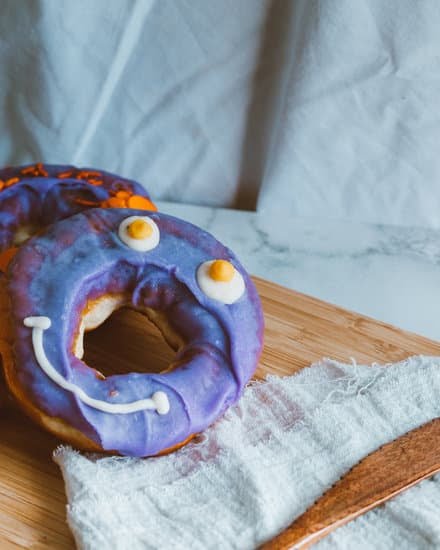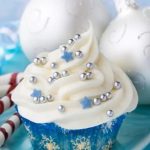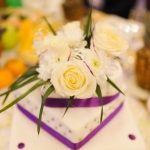Gelatin, a versatile ingredient commonly used in cooking and culinary arts, plays a crucial role in cake decorating. This introductory section will delve into what gelatin is and its significance in creating stunning and professional-looking cakes. Gelatin is derived from collagen found in animal tissues, mainly bones and connective tissues, which are boiled down to extract the gelatinous substance. It comes in various forms such as powdered gelatin or sheet gelatin.
When it comes to cake decorating, gelatin serves multiple purposes due to its unique properties. Firstly, gelatin acts as a stabilizing agent in creams and fillings. By incorporating gelatin into whipped cream or buttercream recipes, you can prevent your creations from collapsing or losing structure over time. Additionally, it helps maintain the shape of delicate fillings like mousses or fruit purees.
Furthermore, gelatin allows for the creation of intricate designs and decorations on cakes. Using different techniques and molds, you can make beautiful gelatin flowers, ribbons, or other decorative elements that give your cakes an elegant touch. Moreover, the recent trend of using mirror glazes on cakes has gained popularity, thanks to the use of gelatin-based recipes that create a glossy finish that reflects light beautifully.
As we explore further into this article, we will discuss the different types of gelatins used for cake decorating and their advantages and disadvantages. We will also provide tips for incorporating gelatin into stabilizing creams and fillings while sharing step-by-step guides on making gelatin designs and decorations for cakes. Lastly, we will address common issues with gelatin usage and offer troubleshooting tips as well as alternative options for those with dietary restrictions.
By arming yourself with knowledge about how to effectively use gelatin in cake decorating, you’ll have the tools to transform your creations into works of edible art that are not only visually stunning but also structurally sound. So let’s dive right in and discover the world of gelatin for cake decorating.
Types of Gelatin Used in Cake Decorating
Gelatin is a versatile ingredient that plays a crucial role in cake decorating. When it comes to using gelatin for cake decorating, there are two main types to choose from: powdered gelatin and sheet gelatin.
Powdered gelatin, also known as granulated or powdered gelatine, is the most common form of gelatin used in cake decorating. It is made by treating animal collagen with an acid or an alkaline solution. Powdered gelatin is available in various strengths or bloom ratings, indicating its gelling power. The higher the bloom rating, the stronger the gelatin will be.
Sheet gelatin, on the other hand, is sold in thin sheets or leaves. It is also derived from animal collagen but undergoes a different production process. Sheet gelatin tends to have a higher bloom rating than powdered gelatin, making it slightly more powerful in terms of gelling ability.
Each type of gelatin has its advantages and disadvantages. Powdered gelatin dissolves more easily and evenly than sheet gelatin because it can be easily sprinkled over liquids without clumping. However, measuring powdered gelatin accurately can be challenging due to its fine texture. On the other hand, sheet gelatin requires soaking in cold water before use and then melting it gently before incorporating it into recipes.
When using either type of gelatin in cake decorating, it’s essential to follow specific instructions that come with your chosen recipe or product packaging. Typically, both forms require blooming (softening) in cold water before being heated and melted into a liquid for incorporation into creams, fillings, glazes, or decorative elements.
Using Gelatin for Stabilizing Creams and Fillings
Gelatin is not only a versatile ingredient in cake decorating but also plays a crucial role in stabilizing creams and fillings. Incorporating gelatin into these recipes helps provide structure, prevent melting or collapsing, and prolong the shelf life of the finished cakes. Whether you’re working with whipped cream, buttercream, or other fillings, gelatin can be your secret weapon in achieving stable and delectable creations.
To stabilize whipped cream using gelatin, start by blooming the powdered gelatin in cold water for a few minutes until it becomes soft and spongy. Then gently heat the mixture over low heat or microwave it until the gelatin has dissolved completely. It is important to stir continuously to avoid clumping or burning.
Once the mixture is ready, let it cool slightly before incorporating it into freshly whipped cream. Slowly drizzle the gelatin mixture into the cream while whisking constantly. This method ensures even distribution of gelatin throughout the cream, resulting in a firm texture that won’t collapse or weep.
When working with buttercream, you can follow a similar process. Bloom the powdered gelatin, dissolve it gently, and then let it cool slightly before adding it to your prepared buttercream. Be sure to mix thoroughly to evenly distribute the gelatin without causing any lumps or separation.
| Gelatin Type | Advantages | Disadvantages |
|---|---|---|
| Powdered Gelatin | Easier to find and measure accurately | Requires blooming and dissolving before use |
| Sheet Gelatin | No blooming required, can be added directly to liquid | Not as widely available and measurements can be less precise |
Incorporating gelatin into creams and fillings not only provides stability but also enhances the flavor and texture. It allows you to create cakes with delicate decorations or intricate layers without worrying about the structural integrity of your creations. So next time you’re working on a cake that requires a stable filling or cream, don’t forget to harness the power of gelatin for beautiful and long-lasting results.
Creating Gelatin Designs and Decorations for Cakes
When it comes to cake decorating, gelatin can be a versatile and exciting medium to work with. With its unique properties, gelatin can be transformed into beautiful designs and decorations that add an extra touch of elegance to any cake. In this section, we will explore various techniques for creating gelatin-based designs and decorations, as well as provide a step-by-step guide to making gelatin flowers, ribbons, and other decorative elements.
One technique for creating gelatin designs is using molds. These can be found in a variety of shapes and sizes, allowing you to customize your cake decorations to suit the theme or occasion. To create molded gelatin designs, simply prepare your chosen flavor or color of gelatin according to the instructions on the packaging.
Once the gelatin is prepared but still in a liquid state, pour it into the molds and refrigerate until set. Carefully remove from the molds by gently pushing on one side or using warm water to help release the design.
Another popular method for creating gelatin decorations is by using gelatin sheets. These thin sheets can be easily cut into any shape or size desired, making them perfect for intricate detailing on cakes. To use gelatin sheets for decoration, soften them in cold water until pliable.
Gently squeeze out any excess water before placing them onto your cake surface. The gelatin sheets will stick to the cake when moistened, allowing you to create beautiful patterns, borders, or even delicate lace-like designs.
To take your gelatin decorations one step further, you can also experiment with adding colors or flavors to enhance their visual appeal. Gel food coloring can be used to achieve vibrant hues that match your overall cake design.
Similarly, flavored extracts such as vanilla or almond can be added to the gelatin mixture prior to setting it in molds or cutting it into shapes. The possibilities are endless when it comes to creating gelatin designs and decorations for cakes, so don’t be afraid to let your creativity shine.
Gelatin as a Mirror Glaze for Cakes
Gelatin is not just a versatile ingredient for stabilizing creams and fillings; it can also be used to create stunning mirror glazes for cakes. Mirror glazes have become increasingly popular in cake decorating due to their shiny and reflective appearance. They provide a sleek and professional finish that adds elegance to any cake design.
To achieve a flawless mirror glaze using gelatin, you will need the following ingredients:
- 1 cup of water.
- 2 cups of sugar.
- 1 cup of sweetened condensed milk.
- 4 tablespoons of powdered gelatin.
- Gel food coloring (optional).
Here’s a step-by-step guide on how to make a gelatin-based mirror glaze:
- Begin by blooming the gelatin. Sprinkle the powdered gelatin over ¼ cup of cold water in a small bowl or measuring cup. Allow it to sit and absorb the water for about 5 minutes until it becomes slightly thickened.
- In a saucepan, combine the remaining ¾ cup of water, sugar, and sweetened condensed milk. Heat the mixture over low heat, stirring continuously until the sugar has dissolved completely.
- Remove the saucepan from heat and add the bloomed gelatin mixture into the hot liquid, stirring until it is fully dissolved.
- Optional: Add gel food coloring to achieve your desired colors for the mirror glaze.
- Let the mixture cool for about 10 minutes before pouring it onto your chilled cake. The glaze should be warm but not hot when applied.
- Place your chilled cake on a wire rack or elevated surface with a tray underneath to catch any excess glaze that drips off.
- Slowly pour the mirror glaze over the top of your cake, allowing it to flow down and cover all sides evenly.
- Use an offset spatula or bench scraper to smooth out any air bubbles or imperfections in the glaze. Rotate the cake to ensure that the glaze spreads evenly.
- Allow the mirror glaze to set at room temperature for a few hours or in the refrigerator for quicker results. The glaze should become firm and glossy.
By using this gelatin-based mirror glaze, you can elevate your cake decoration to another level. Experiment with different colors and designs to create a show-stopping centerpiece that will impress your guests. Remember, practice makes perfect, so don’t be discouraged if your first attempt doesn’t turn out exactly as planned. Keep experimenting and enjoy the process of creating beautiful mirror glazes using gelatin.
Applying Gelatin for a Smooth Cake Finish
Achieving a smooth and flawless finish on a cake can be a challenging task for many home bakers. However, gelatin can be an excellent tool to help you achieve that professional-looking finish. Using gelatin to create a smooth cake surface not only enhances the appearance of your cake but also helps to prevent crumbs from showing through layers of icing or frosting.
To apply gelatin for a smooth cake finish, start by preparing your gelatin mixture. For this purpose, it is best to use powdered gelatin as it dissolves easily and evenly. Begin by blooming the gelatin in cold water according to the instructions on the packaging. Once bloomed, heat the mixture gently until the gelatin completely dissolves and becomes clear.
Before applying the gelatin to your cake, make sure that your cake layers are properly stacked and filled with your desired filling. Allow the assembled cake to chill in the refrigerator for at least 30 minutes so that it sets and becomes more stable.
Once your cake has chilled, take a pastry brush and gently brush on a thin layer of the prepared gelatin mixture all over the top and sides of the cake. Make sure to cover every inch of surface area, including any exposed edges or corners. This layer will create a barrier between the crumbly cake layers and any icing or frosting you apply later.
After applying the initial thin layer of gelatin, place your cake back in the refrigerator for about 15 minutes to allow it to set slightly before applying another coat. Repeat this process two or three times until you have achieved a smooth, even surface.
By using gelatin to create a smooth finish on your cakes, you can elevate their presentation and give them that professional touch. The application process may require some practice, but with time and patience, you will master this technique. So go ahead, experiment with gelatin when decorating your cakes, and see the difference it makes in the final result.
Troubleshooting Common Issues with Gelatin in Cake Decorating
Addressing Common Problems with Gelatin
When working with gelatin in cake decorating, it is not uncommon to encounter certain issues that can affect the final result of your creations. Understanding and addressing these common problems can help ensure successful gelatin usage and achieve the desired aesthetic for your cakes.
Lumps and Clumping
One common issue when using gelatin is the formation of lumps or clumps in the mixture. This can occur if the gelatin powder is not properly dissolved or if it comes into contact with cold liquids too quickly.
To prevent lumps, it is important to fully dissolve the powdered gelatin in warm liquid before adding it to a recipe or mixture. This can be achieved by sprinkling the powdered gelatin over a small amount of warm water and allowing it to bloom for several minutes, then gently stirring until all granules are dissolved.
If you still encounter lumps or clumps after following these steps, you can strain the mixture through a fine-mesh sieve to remove any remaining solid particles. This will ensure a smooth texture and prevent any unwanted lumps in your cake decorations.
Setting Issues
Another common problem when using gelatin in cake decorating is achieving the desired setting consistency. Gelatin should set firm enough to hold its shape but still remain soft and pliable for easy manipulation. If your gelatin sets too firm, resulting in a rubbery or stiff texture, it may be due to using too much gelatin powder or over-chilling the mixture.
To avoid this issue, carefully follow the instructions for gelatin proportions provided by your specific recipe. If your mixture does become too firm, you can soften it by gently heating it over low heat while stirring continuously until it reaches a more workable consistency. Additionally, avoid placing gelatin-based decorations directly in the refrigerator as this can lead to overly firm results. Instead, allow them to set at room temperature until they reach the desired texture.
Solutions and Troubleshooting Tips
If you encounter any issues while working with gelatin in cake decorating, there are several troubleshooting tips that can help you overcome these challenges.
- Always use high-quality gelatin from reputable brands to ensure consistent results.
- Follow recipe instructions and proportions for gelatin usage, including blooming and dissolving the powder properly.
- If your gelatin mixture appears too thin or watery, it may need additional chilling time. Place it in the refrigerator for a few minutes at a time, checking its consistency regularly until it reaches the desired thickness.
- To prevent air bubbles forming in your gelatin-based decorations, gently tap the container on a flat surface to release any trapped air before allowing it to set.
- If you are working with intricate designs or delicate decorations, consider using a syringe or small squeeze bottle to carefully fill molds or create fine details.
By addressing and troubleshooting common issues with gelatin in cake decorating, you can achieve optimal results and create stunning cake designs that showcase both your creativity and technical skills. Remember that practice makes perfect, so don’t be discouraged if you encounter challenges along the way. With patience and perseverance, you will soon become adept at using gelatin in cake decorating.
Gelatin Alternatives for Cake Decorating
Vegetarian Gelatin Substitutes
For those who follow a vegetarian diet or have dietary restrictions, gelatin may not be an option for cake decorating. However, there are several alternatives available that can provide similar effects. One popular alternative is agar-agar, which is derived from seaweed.
Agar-agar has the same gelling properties as gelatin and can be used in the same way. It is important to note that agar-agar sets faster than gelatin, so adjustments may need to be made when using it in recipes.
Another vegetarian option is carrageenan, which is derived from a type of seaweed. Carrageenan can create a firm gel-like texture and is commonly used in dairy-free products as a thickening agent. It can be used in cake fillings and creams to help stabilize them just like gelatin.
Dietary-Restriction Friendly Alternatives
In addition to vegetarian alternatives, there are also options for those with other dietary restrictions. One such alternative is pectin, which is commonly used as a thickener in jams and jellies. Pectin can be used to set fruit fillings and mousses for cakes and provides a similar texture to gelatin.
Xanthan gum is another alternative that works well for stabilizing creams and fillings. It is often used in gluten-free baking as a binder and thickening agent. Xanthan gum can help create stable whipped creams or frostings without the need for gelatin.
Pros and Cons of Alternative Options
While these alternatives offer solutions for individuals with dietary restrictions or personal preferences, they do have their pros and cons. Vegetarian substitutes like agar-agar and carrageenan provide similar gelling properties to gelatin but may have slightly different textures or setting times. Pectin and xanthan gum, on the other hand, may not provide the exact same texture or stability as gelatin, but they are convenient options for specific dietary needs.
It is important to experiment and adapt recipes when using gelatin alternatives to achieve the desired results. Each substitute may require different amounts or methods of incorporation, so it is recommended to follow specific recipes and guidelines for using them in cake decorating. Ultimately, these alternatives allow individuals to enjoy the beauty of gelatin-inspired designs and decorations while accommodating their dietary needs.
Conclusion
In conclusion, gelatin is a versatile and essential ingredient in cake decorating. Its unique properties make it an invaluable tool for creating stunning designs and decorations, as well as stabilizing creams and fillings. Whether you choose to use powdered gelatin or sheet gelatin, each type has its advantages and disadvantages that can be explored to achieve the desired results.
Furthermore, gelatin offers endless possibilities for creativity in cake decorating. From creating intricate gelatin flowers and ribbons to achieving a flawless mirror glaze or a smooth cake finish, the techniques and recipes discussed in this article provide a solid foundation for experimentation and exploration.
It is important to note that troubleshooting common issues with gelatin is crucial for successful cake decorating. Addressing problems such as lumps, clumping, or setting issues can help ensure that your gelatin-based creations turn out perfect every time.
Lastly, while gelatin is the go-to option for many decorators, there are alternatives available for those with dietary restrictions or who prefer vegetarian options. Exploring these substitutes and comparing their results can expand your options and allow even more people to enjoy the beauty of cake decorating with gelatin.
Frequently Asked Questions
What kind of gelatin is used in cakes?
The kind of gelatin typically used in cakes is unflavored powdered gelatin. This type of gelatin is derived from animal collagen and is available in most grocery stores.
It is essential for adding stability and texture to cakes, as it acts as a binding agent and helps them hold their shape. To use gelatin in cakes, it is usually bloomed in cold water first, then dissolved by gently heating it before incorporating it into the cake batter or filling.
What gelatin do you use for jelly art?
For creating jelly art, a specific type of gelatin known as agar-agar is commonly used instead of traditional animal-based gelatin. Agar-agar comes from seaweed and has excellent gelling properties, making it perfect for jelly art creations that can hold intricate designs without melting or deforming easily.
It is versatile and allows artists to create various colors and flavors by adding additional ingredients like fruit juice or food coloring to the mixture. Compared to traditional gelatin, agar-agar sets more firmly at room temperature and does not require refrigeration.
How do you make edible plastic with gelatin?
Making edible plastic using gelatin involves a simple process that requires only a few ingredients: powdered gelatin, water, corn syrup (or glucose syrup), glycerin (optional), flavoring (optional), and food coloring (optional). The powdered gelatin is bloomed in cold water until it softens, then heated either in the microwave or on the stovetop until completely dissolved. Corn syrup or glucose syrup is added next along with any desired flavorings such as vanilla extract or flavored oils.
If a more pliable plastic consistency is desired, glycerin can be added at this stage. Finally, food coloring may be mixed in to achieve the desired color before pouring the liquid mix onto a silicone mat or greased surface to cool and solidify into an edible plastic sheet that can be shaped or cut into various decorative elements for desserts or other culinary creations.

Welcome to our cake decorating blog! My name is Destiny Flores, and I am the proud owner of a cake decorating business named Cake Karma. Our mission is to provide delicious, beautiful cakes for all occasions. We specialize in creating custom cakes that are tailored specifically to each customer’s individual needs and tastes.





